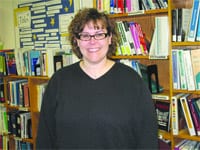Prescription for Trouble Abuse of Pharmaceutical Drugs Rising among Teenagers
While beginning to research this story about the rise of prescription drug abuse among teenagers, The Healthcare News visited Google to call up some statistics from the U.S. government and health care agencies.
They were eye-opening. For instance, the Partnership for a Drug Free America estimates that 20{06cf2b9696b159f874511d23dbc893eb1ac83014175ed30550cfff22781411e5} of teens have abused a prescription pain medication, another 20{06cf2b9696b159f874511d23dbc893eb1ac83014175ed30550cfff22781411e5} have abused prescription stimulants and tranquilizers, and 10{06cf2b9696b159f874511d23dbc893eb1ac83014175ed30550cfff22781411e5} have abused cough medicine. The numbers aren’t difficult to find.
But here’s the interesting thing: neither are the drugs. On the right side of the Google search page, in a list of sponsored links, were a series of attention-getting blurbs: “Online pharmacy sale.” “Purchase Vicodin, Xanax, and Soma.” “Buy discount drugs now.” “Order drugs online. Don’t wait for doctors.” And so on.
With the Internet now an extension of the medicine cabinet, such links shed some light on how prescription drugs are winding up in the hands of people without prescriptions — an increasing number of them teenagers.
“Nationally, prescription drugs are second only to marijuana as drugs people are trying for the first time, surpassing even alcohol and older drugs,” said Roberto Agrait, licensed mental health counselor at Holyoke Medical Center. “And the big factor now is that they’re available. In the past 15 to 20 years, the use of painkillers, especially the opiates, has risen.”
The National Survey on Drug Use and Health identifies four commonly abused types of prescription medications: pain relievers, stimulants, sedatives, and tranquilizers. Among those groups, painkillers — the powerful Oxycontin among them — are the most commonly abused, with girls more likely than boys to report use during the past month, 4.3{06cf2b9696b159f874511d23dbc893eb1ac83014175ed30550cfff22781411e5} to 3.6{06cf2b9696b159f874511d23dbc893eb1ac83014175ed30550cfff22781411e5}.
Substance-abuse counselors speculate that part of the appeal of pharmaceuticals is the perception that they are safer than street drugs, since they are professionally manufactured and can often be found in the household medicine cabinet — or in the pockets of school peers. Simply put, many teens who can’t see themselves buying street drugs may feel safer trying out Oxycontin.
“These drugs don’t have the stigma of heroin and cocaine when a young person can go to the medicine cabinet at home and they’re available,” Agrait said.
There’s a rationalization that, if it was prescribed by a doctor, it must be OK. And when they’re used as prescribed, they can be very safe and helpful. The problem arises when people take more than they were prescribed or use it for other reasons.”
And it’s a significant problem, he added, when the National Institute of Drug Use reports that 48 million Americans — more than 16{06cf2b9696b159f874511d23dbc893eb1ac83014175ed30550cfff22781411e5} of the population — have used prescription drugs for non-medical reasons.
This month, The Healthcare News examines this trend as it relates to teens — and what some concerned adults are doing about it.
Making the Score
James Leyden, program manager of inpatient substance abuse services at Providence Hospital in Holyoke, said teens, after developing a taste for sedatives or stimulants, are clever about obtaining more.
“A lot of these drugs are prescribed,” Leyden said. “Addicts have their own network, and they’re very clever when it comes to finding out what stories they have to tell to get the drugs they seek. Doctors are in the business of helping people, and if someone says, ‘I’m in terrible pain,’ the tendency is to help them. They might not look like addicts when they come into the office. They might look like an 18-year-old with a sciatic nerve problem.”
Even for those who aren’t able to obtain drugs in that way, or on the Internet, Leyden said they have a way of finding what they need.
“It’s easier for kids to get marijuana than it is to get alcohol,” he said. “That’s not to say that everyone who sells marijuana sells Oxycontin, but when you travel in illegal circles, illegal things become available to you.”
Leyden said some teens who experiment with prescription drugs don’t dig too deep a hole, while others transition quickly into other, more potent drugs that are readily available on the street.
“It becomes cheaper to buy heroin than Oxycontin,” he said, explaining that both have a sedating, contenting effect on the user. “They have to make an economic decision, and they find it’s cheaper to use the street drug.”
Before becoming addicted to what is effectively a prescription alternative to heroin, many teenagers — often suburban kids somewhat insulated from urban street life — would have been afraid to enter that world. In addition, Leyden said, many teens associate street drugs with eventual IV use, which delivers the most potency but is associated with the deepest addiction. Once hooked, though, many of those stigmas fall by the wayside.
“There has always been the same opportunity for addiction in Wilbraham as there is in Holyoke; the thing that’s different is the opiate,” he said, explaining that painkiller abuse is more associated with the suburbs, while heroin has a reputation as a “city drug.” The transition between the two drugs is all too common, however. “They can get addicted in the suburbs, but they end up in the city eventually.”
Another View
However, Lauri Turkovsky, senior prevention science coordinator with the Western Mass. Center for Healthy Communities in Holyoke, believes that, while prescription drug abuse is a problem, hype-driven media coverage has masked the reality that it’s still far less widespread among Massachusetts teens than alcohol, marijuana, and inhalants.
Prescription drug abuse, she said, “makes a good front-page story for sure, but it’s not where the majority of problems are coming from. For those of us who do prevention and actually see the numbers, we know what the main problems are. For us, these up-and-coming drugs can distract from the main issue.”
For example, the most recent Youth Risk Behavior Survey conducted by the Mass. Department of Education reveals that 48{06cf2b9696b159f874511d23dbc893eb1ac83014175ed30550cfff22781411e5} of the state’s high school students report using alcohol within a month previous to taking the survey — down from 53{06cf2b9696b159f874511d23dbc893eb1ac83014175ed30550cfff22781411e5} a decade ago, but still a high number.
“For teenagers, alcohol is the most abused drug, hands down,” Turkovsky said, “which is why I’m not going to waste my time keeping statistics on something that a much smaller number of teens use.”
Turkovsky, whose agency helps communities and agencies develop strategies to evaluate and prevent substance abuse, said the best weapon against any drug, especially early in adolescence, is education.
“Generally speaking, we want all kids to get some kind of drug and alcohol education, and we want that typically to be the first year of middle school, before they’re having problems,” she said.
The timing is crucial, she explained, because elementary-school students are usually years away from even considering substance abuse, and many high-school students are already regular users.
“In elementary school, you’re thinking, ‘I’ve never used drugs, and I don’t think I’ll ever use them,’” she said. “In middle school, it’s ‘I’m not using right now, but I know people who do, and I might in the future.’ It’s relevant to them, but it’s still before a lot of them are using. In high school, a lot of kids already have heavy involvement, and you’re clearly not doing prevention anymore; instead it’s intervention and harm reduction.”
At least in the case of alcohol, statistics seem to bear out the middle-school intervention strategy. According to the national Substance Abuse and Mental Health Services Administration, 14{06cf2b9696b159f874511d23dbc893eb1ac83014175ed30550cfff22781411e5} of kids who first experiment with alcohol at age 14 or younger struggle with alcoholism as adults. That figure drops to 9{06cf2b9696b159f874511d23dbc893eb1ac83014175ed30550cfff22781411e5} of teens who get their first taste between ages 15 and 17, 4{06cf2b9696b159f874511d23dbc893eb1ac83014175ed30550cfff22781411e5} for ages 18 to 20, and 3{06cf2b9696b159f874511d23dbc893eb1ac83014175ed30550cfff22781411e5} for those who hold off until age 21 or later.
Going on Offense
Richard Cohen, mayor of Agawam, is one government official who has bought into the concepts of educating and supporting teenagers when it comes to dealing with drug issues, including prescription abuse. “We’re aware that not only Agawam but every community has an issue with drugs,” Cohen said. “This isn’t news for any town. We didn’t want to put our heads in the sand and pretend it doesn’t exist.”
As a result, Cohen said town and school officials, working in tandem with police, counselors, and parents, have developed a support network by which teens can feel secure bringing their drug issues without fear of punishment.
“Because of this, we have the highest numbers of kids going through methadone clinics and rehabilitation at Providence Hospital,” he said. “I don’t think the reason is that we have any more or less of a problem than any other community, but because we’re helping kids feel safe, instead of pretending it doesn’t exist.”
To Leyden, not only does the problem exist, but he recognizes the heady draw both prescription and street drugs can have for teenagers, who are already navigating the mazes of hormones, peer pressure, and new responsibilities.
“My own view is that, in a sped-up culture like this one, it’s hard for people to have a sense of control as they try to figure out meaning in life, and I think this is a breeding ground for experimentation,” he said. “It can get pretty complicated, and people find relief from those worries in these drugs that can look like a pretty good option.
“Take a 15- or 16-year-old kid who might be neglected at home or abused at school,” he continued. “Suddenly, you give him a drug, and all those problems go away. That’s pretty seductive.”
Leyden said he has known adults who were prescribed Oxycontin after an injury or surgery, but got off it before finishing the prescription, “because it felt too good. To a teenager taking the drug mainly for that feeling of contentment — and who might not have the same level of control or fear of addiction — the slope can become slippery in a hurry.
Toward a Solution
Cohen is among those who want to flatten that slope.
Agawam’s educational programs include middle-school visits from incarcerated offenders who talk about the serious consequences that drug abuse can have — painting a far different picture than many teens have when they sneak their first few pills from the medicine cabinet or from a friend at school.
“We’ve taken a proactive approach to this situation,” the mayor said. “If we can save one life, we’ve done a good job. It’s morally unconscionable to close your eyes to this problem, because it’s everywhere in today’s society.”
“Why wait for doctors?” Internet sites ask. Meanwhile, in a youth culture increasingly prone to find solutions to adolescent angst in a pill bottle, the questions — and challenges — only mount.


